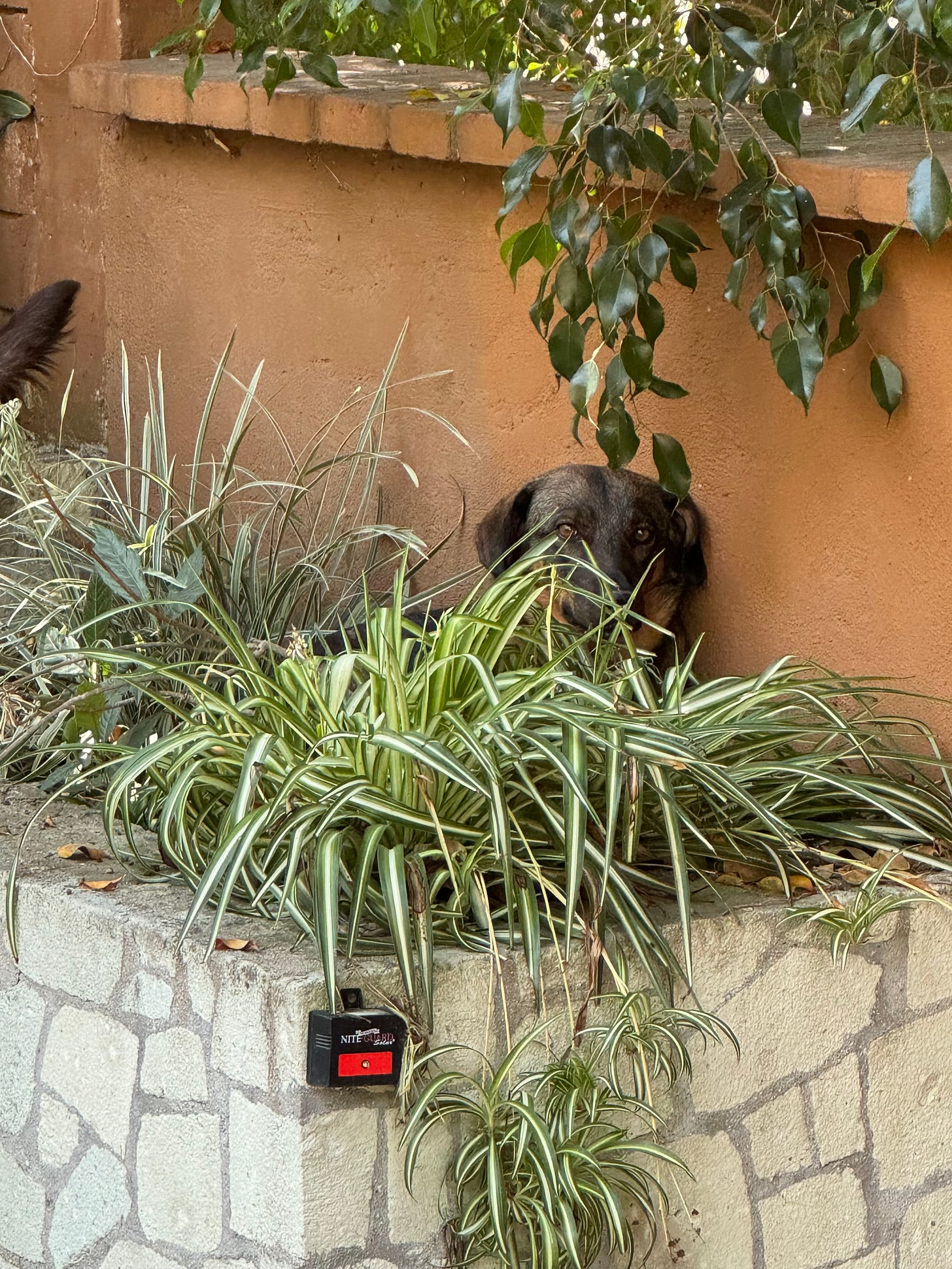Recently I said to my Spanish teacher, Andrés, that I find myself in a peculiar place with my language abilities. I’ve learned enough that I can speak with people more fluently and have what approaches a real conversation, but my improved vocabulary and growing confidence can unintentionally create the impression I know more than I actually do. It’s sort of like learning how to swim in a pool, and then going jumping off of a boat into the ocean. I can keep from drowning, but it’s easy to get overwhelmed when the waters are a lot darker and the waves are knocking you about.
When I find myself in a conversation where I’ve lost the thread of what’s happening, I’m left with two options: fake my way through the interaction as best I can, or just own up to my ignorance and say lo siento, no entiendo—I’m sorry, I don’t understand. Neither is easy, but copping to ignorance has proven to be the more useful thing to do (and the more honest as well), but also much harder.
English is not common in our part of Oaxaca, and even in the city you can’t expect servers, shopkeepers, or other people who frequently interact with tourists to speak English. There’s absolutely nothing wrong with that, and the onus is on the traveler, not the host country, to accommodate. But it does make it even more essential that we learn to speak Spanish. Beyond needing to be able to effectively live our lives, it’s just sort of embarrassing to live in a place full time and not speak the language.
It’s been really hard learning to own up to when I don’t understand what someone’s saying to me. Part of my discomfort is probably just the result of pride, and not wanting to look foolish in front of people. I think the other part, though, is that I feel strongly it’s my responsibility to learn and not for Oaxaca to accommodate me. When I can’t speak Spanish, and the person I’m speaking with doesn’t know any English, it creates an impasse I think I am responsible for.
There have definitely been times I’ve tried to fake it, and it goes pretty much exactly as you’d expect. Clinging to the words I’ve recognized, I’ve tried to basically guess how I should respond, typically by either saying yes or no, and it immediately becomes painfully obvious I don’t know what the hell is going on. It leaves both of us stuck in an interaction that has suddenly juddered to a stop, and it’s an embarrassing and painful way to try to live. It also reminds me of when I’ve worked in corporate settings and during a 1-on-1 conversation have had someone lie to me. I knew they were lying, and they knew they were lying. Everyone in the conversation knows a lie has happened. Wouldn’t it be easier just to tell the truth?
Now, as the pretender, I have a deeper understanding of what can lead someone into an obvious lie; it’s difficult to admit you don’t comprehend what’s happening. But, I’ve come to realize saying no entiendo is liberating, and dispensing with the thin transparent lie is the much better way to live. Yeah, sometimes conversation can’t proceed until I dig out my phone and open my translation app, but other times the person says oh, ok, and they either rephrase what they’ve said, or find some other way to communicate. More than once someone has quite literally drawn me a picture to explain what they were trying to explain, a solution that is equally helpful, funny, and mortifying. But, I have to say, having someone draw me a picture beats standing in front of them having answered “yes!’ to an inquiry that did not merit a yes-or-no response.
Other phrases have also proven to be incredibly helpful. This is not a comprehensive list, but these are some of the hits for me:
“Yo sé!” means “I know!” It is a phrase that, to me, initially felt very celebratory. It didn’t just signal that yes, I agreed with what is being said by the person I was speaking with. It meant my Spanish had reached a level where I was able to have some sort of conversation with someone, and that I was no longer being held underwater and carried along by an undertow of words I was unable comprehend. Being able to sincerely say that yes, I agreed, elicited a small, consistent, victorious thrill.
“Creo que” means “I think that,” and (for me) it’s a way of both asking a question and hedging. When “creo que sí”—”I think so"—first began to leave my lips there was a good chance my intonation would flip ever so slightly up at the end of the sentence, creating the suggestion of an inquiry. “Should we put this plant here?”, Edgar might ask. “Creo que…sí?” I’d reply, watching carefully to see if he would agree. I find I no longer need to let the question hang in the air in the way I used to, which is better for all involved.
“¿Qué piensas?” means “what do you think?” It’s a question I often long to ask people, but it’s risky because it creates the potential for a conversation I may not be linguistically prepared for. As a therapist and a psychologist I learned to always ask questions which start with the words “how” and “why”, because they’re inherently open-ended. Ask someone, “do you think…” and you invite the binary reply of yes or no, answers which don’t invite elaboration. “What do you think…”, on the other hand, is open, potentially endless, and for someone who doesn’t yet fully speak the language, far more terrifying. Sadly, as is true in so many other parts of life, it’s the scary thing that leads to the most growth.
The nice thing about my improved Spanish is that by getting sucked into much more complicated conversations I do find I am improving faster than ever. Without true, daily immersion it probably would have taken me a couple of years to get to the level I’ve achieved in just the past 5-ish months. So, while it does mean I look foolish on what is effectively a daily basis, at least I’m improving.





Whew, I'm probably going to say "lo siento, no entiendo" a lot. And I have to be ok with that. Is Andrés accepting more clients? I found a language school near where I'll be staying on Google, but I'm not confident it's actually operational.